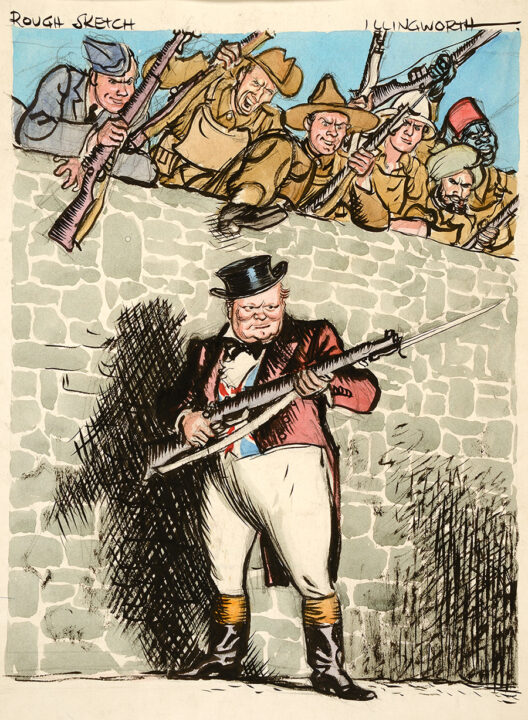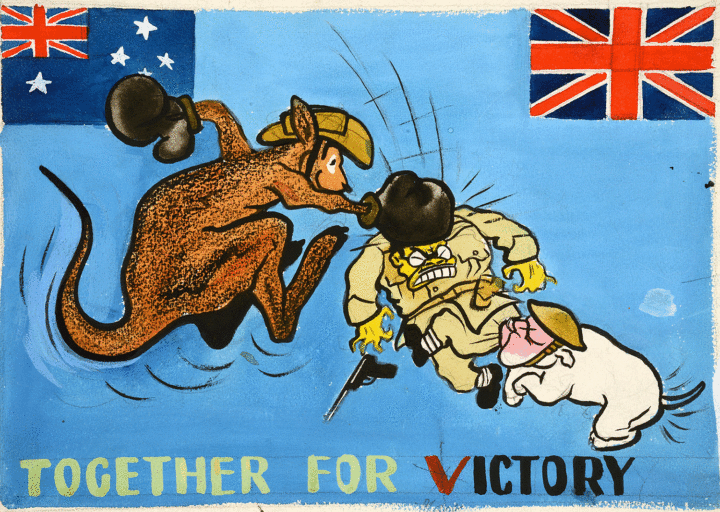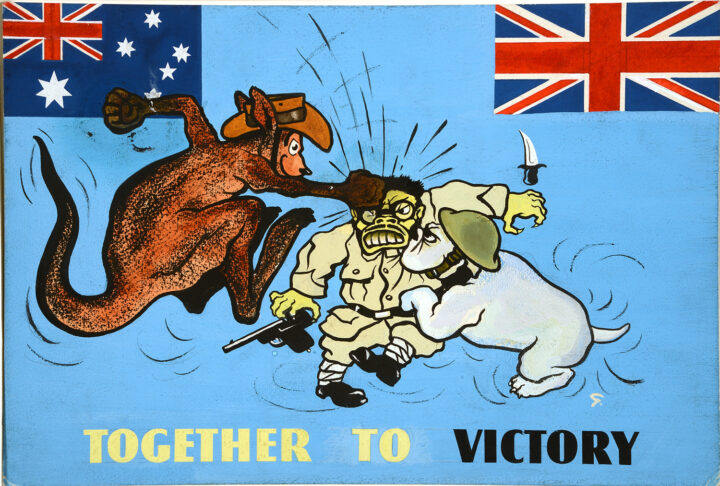
Cartoons usually have a caption which helps to sum up its viewpoint, provide a title or give a snappy punch line. As with photographs, if the caption is changed, its meaning can change. Captions can also strengthen a cartoon’s message.

This cartoon by Leslie Illingworth shows Winston Churchill as ‘John Bull’ holding a bayonet, standing against a wall which Commonwealth troops are clambering over. There is no caption, although the original artwork was called ‘Back to the wall’, 1939-46, Catalogue ref: INF 3/1325
- Can you explain what makes the original title ‘Back to the wall’ (not added to cartoon) effective?
- Why is Churchill shown as ‘John Bull’?
- How has Churchill been portrayed as this character?
- How does the cartoonist infer that the men on the wall are Commonwealth troops?
- Why do you think this cartoon was produced during the Second World War?
- What is the message of the cartoon?
- Write your own caption for this cartoon.
- Does your caption make the message powerful than ‘Back to the wall’?
- Compare your ideas with a partner.
Changing the caption
Both of the below cartoons were produced by the government department, the Ministry of Information responsible for creating publicity and propaganda during the Second World War. Both show Australia (part of the former British Empire) and Britain attacking a Japanese soldier. Japan had declared war on the USA and the former British Empire on 8 December 1941. Japan attacked the United States naval base at Pearl Harbor and British forces in Malaya, Singapore, and Hong Kong.
Cartoon A: The caption reads: ‘Together for Victory.’
- Can you identify the kangaroo, uniformed soldier, and dog in the cartoon?
- Which flags do the countries represent?
- What is the message of this cartoon?
- How has the cartoonist tried to put over his message? Refer to specific techniques of persuasion [Use cartoon analysis sheet to help.]
- How is this government cartoon trying to influence public opinion?
- How does knowing the Second World War context help us to understand the cartoon?
Cartoon B: The caption reads: ‘Together to Victory.’
- How different is this to the previous cartoon?
- To you think the differences make the message more/less effective?
- Can you explain why/why not?

